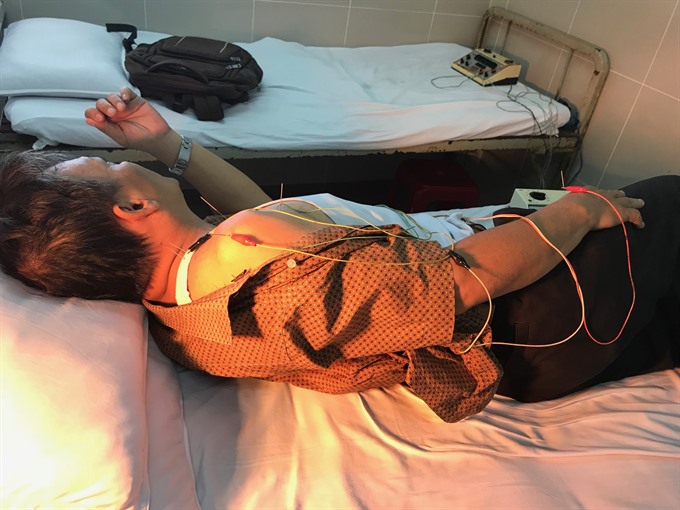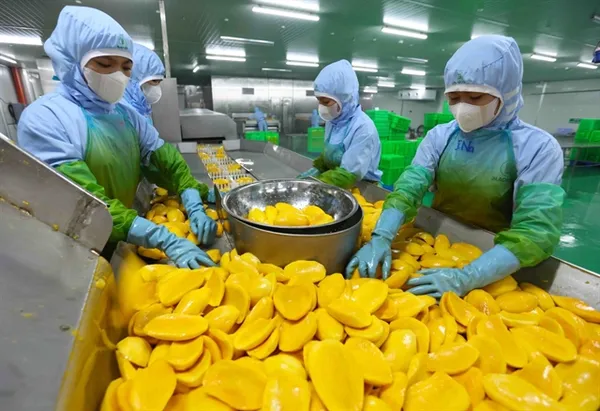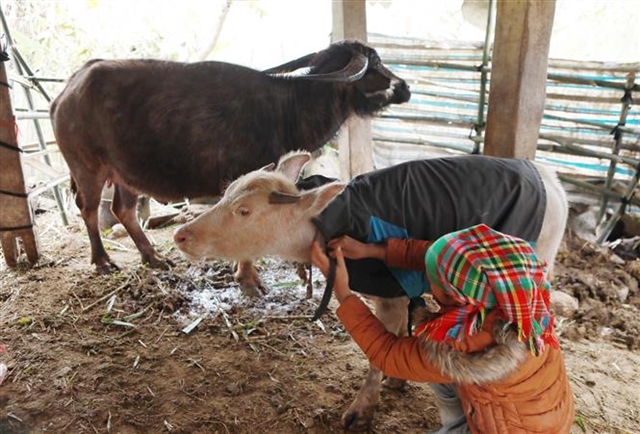 Society
Society

Doctors and physiotherapists at HCM City’s District 11 Hospital’s traditional medicine department are treating more and more patients who prefer traditional methods over Western medicine, or want a combination of both.
 |
| A patient is treated at HCM City’s District 11 Hospital’s traditional medicine department.— VNS Photo/ Gia Lộc |
Gia Lộc
HCM CITY— Doctors and physiotherapists at HCM City’s District 11 Hospital’s traditional medicine department are treating more and more patients who prefer traditional methods over Western medicine, or want a combination of both.
The hospital doctors treat 250 patients every day, compared to 100 per day four to five years ago.
Dr Võ Ngọc Minh, head of the department, said that 20 per cent of the total number of patients were people aged 20 to 30.
Patients of all ages are treated for back and neck pain, as well as Bell’s palsy, a condition in which facial muscles on one side of the face are paralyzed.
“The trend to use traditional medicine is increasing,” Minh said, adding that many patients want to avoid the side effects of Western drugs.
Đặng Quốc Tiên, 64, who lives in the district, has been visiting the traditional medicine department for four months to have infrared and pulse electromagnetic field therapies, and spinal traction.
He said he wanted to avoid surgery to treat his cervical degenerative disc disease.
“These therapies are reducing my pain,” Tiên said.
Like District 11 Hospital, Tân Phú District Hospital’s traditional medicine department is also treating more patients, with nearly 200 patients daily.
Modernisation
Compared to the past, District 11 Hospital’s traditional medicine department now has modern machines, such as galvanopuncture and laser puncture devices, ultrasound therapy, shortwave diathermy and other devices.
The new machines have improved treatment effectiveness and reduced the number of medical errors, compared to manual machines used in the past, Minh said.
To prescribe medicine, the doctors now use software which keeps track of patients’ medical records and prescribed drugs, and follows the Ministry of Health’s required medical protocols, he said.
Dr. Trương Thị Ngọc Lan, deputy director of the HCM City Traditional Medicine Institute, said: “In the past, based on traditional examinations, doctors diagnosed disease based on the pulse and what patients told them. Now, doctors can diagnose problems more precisely.”
Doctors in traditional medicine departments also have access to X-rays, CT scans, ultrasounds and MRIs.
For example, thread embedding, a kind of acupuncture used to treat disease, does not require daily visits to the hospital.
“Devices for thread embedding have been modernised,” Lan said.
More research is also being done that is based on scientific evidence like modern medicine, while traditional drugs have been developed in modern ways.
Traditional drugs are now being manufactured as capsules that are easy for patients to swallow, she said.
For treatment of cancer, diabetes and hypertension, traditional medicine can help reduce symptoms and side effects caused by modern medicine.
“In patients with cancer, for instance, herbal medicines are used before chemotherapy to remove side effects and improve health and immunity,” she added.
“At our institute, we have a support unit for cancer patients that provides care for many patients in the last stage of cancer who have been discharged and are expected to die at home. They use herbs,” Lan said.
Lê Lâm Minh Tú, 58, of District 11 told Việt Nam News Agency that he suffers from lymphoma and visits the Traditional Medicine Institute of HCM City for two to four weeks of traditional treatment such as acupuncture, massage and herbal medicine.
He receives other nursing care to reduce pain and improve his health. After he visits the institute, he goes to the HCM City Oncology Hospital for chemotherapy.
Challenges
“We have to combine traditional and modern medicine to have the most effective treatment for patients,” Lan said.
However, a shortage of human resources, drugs and herbs are the main hindrances to integrating the two medical approaches.
In addition, the Ministry of Health does not permit Traditional Medicine doctors to study obstetrics, otolaryngology and other specialised fields, she said.
“Because of this prohibition, the Traditional Medicine Institute has to hire general-medicine graduates from medical schools (with Western methods). We send these doctors to specialised hospitals to practise for 18 months to receive a certificate in the respective specialty. They then return to us to be trained further in traditional medicine,” she added.
Lan said the Ministry of Health should allow medical universities to offer traditional medicine training in specialised fields, just as Western medicine does.
The government should also help people grow herbs that could be supplied to traditional medicine institutes and departments throughout the country. This would also reduce the number of imported herbs from China, Lan said.
Active elements of imported herbs can weaken as they are transported to the country.
Herbs produced in the country would help the institute reduce costs for testing imported herbs before they are placed in storage, and would also shorten the time needed to wait for deliveries from China, Lan said. — VNS




